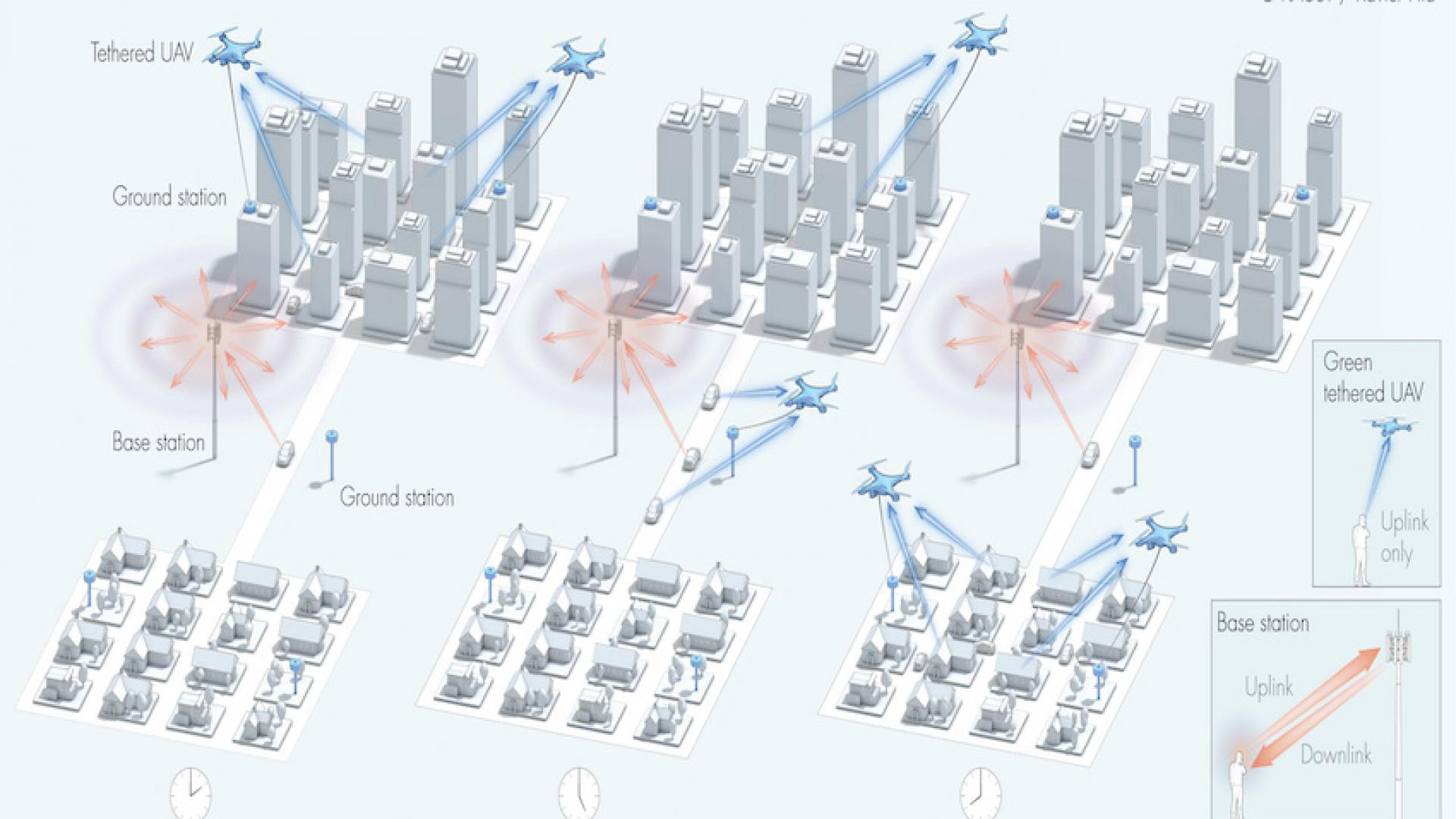The ongoing deployment of the fifth-generation cellular network (5G) has attracted wide attention and controversy from researchers and non-specialists. Attitudes toward 5G and beyond are quite different that some even regard these new technologies as threats. Although the improvements from the communications perspective are apparent and recognized by the public, the dense deployment of next-generation Node-B base stations (gNBs) over the territory generally generates a sentiment of suspect and fear. A prevalent theory circulating among the nonscientific community is that the intensive deployment of base stations over the territory significantly increases electromagnetic field (EMF) exposure and affects population health.
To alleviate this concern, in this work, KAUST Researchers propose a network architecture that introduces tethered unmanned aerial vehicles (TUAVs) carrying green antennas to minimize the EMF exposure while guaranteeing a high data rate for users. In particular, each TUAV can attach itself to one of the accessible ground stations at the top of some buildings. The location of the TUAVs, transmit power of user equipment, and association policy are optimized to minimize the EMF exposure.
More information can be found in the companion video given below and the paper:
Z. Lou, A. Elzanaty, and M. -S. Alouini, "Green tethered UAVs for EMF-aware cellular networks", IEEE Transactions on Green Communications and Networking , 2021.



